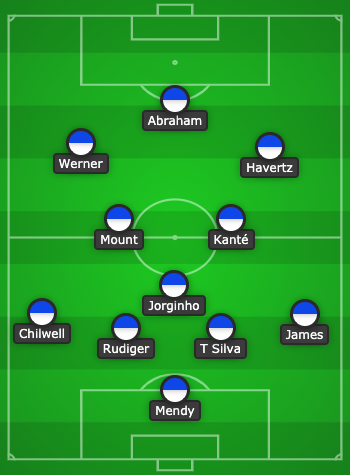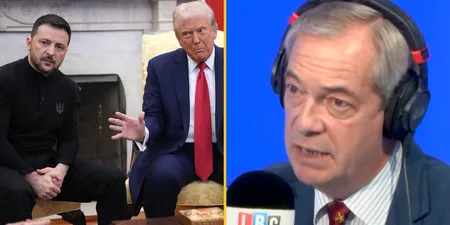He has been described as a blend of Klopp and Guardiola
One of the biggest problems on the field for Chelsea during Frank Lampard’s 18-month reign was that they lacked a distinct identity. As I have written on this site before, Lampard appeared to be stuck between trying to mirror two different title winning sides, the result of which was a dysfunctional, confused side unsure of its own playing style.
If reports are to be believed, players also complained of a lack of tactical instruction from Lampard, who just told them to go out there and express themselves. Given the footballing inspiration within his extended family, it would not surprise me.
But the arrival of Thomas Tuchel will see an end to this go-out-there-and-run-around approach to Premier League football. The German is one of the most sophisticated tactical minds in the game, and his appointment points to a desire to maximise the talents of expensive German recruits Kai Havertz and Timo Werner. Understandable, given the combined £130m the club shelled out for them and their disappointing form thus far.
So what is Tuchel’s philosophy and his preferred formation? As many have documented, he followed Jurgen Klopp’s path of cutting his teeth at Mainz before taking over at Borussia Dortmund, and largely subscribes to the same pressing philosophy. But Tuchel is much more keen on dominating possession than Klopp, and is more flexible in terms of shape.
During his time at Dortmund, he deployed a 3-4-3, a 4-3-3, sometimes a fluid hybrid of the two, and at PSG he was forced to experiment with different shapes to accommodate Neymar into a central position, often going with a 4-2-3-1, before switching to a diamond midfield in the latter stages of last season’s Champions League for more defensive solidity.
All this makes it difficult to predict exactly how he will set Chelsea up. But it’s likely that both Jorginho, and Antonio Rudiger, whom Tuchel wanted to sign for PSG, will both have significant roles to play.
As previously mentioned, the main priority will be getting the best out of Werner and Havertz. So with that in mind, this is one of the many ways Chelsea could line up in the following months.
3-4-3: Mendy: Zouma, Thiago Silva, Rudiger: James, Jorginho, Kanté, Chilwell: Havertz, Werner: Abraham.
The back three sort of picks itself. Zouma was in excellent form this season before Rudiger came back into the side, while Silva captained PSG under Tuchel and is the ideal candidate to sit between two more mobile defenders. Despite being right footed, Rudiger is comfortable on the left side.
Chilwell and James are their only good full-backs and they both excel going forward, so, again, they pick themselves. Though, a clip from his first training session doing the rounds on twitter suggests Marcos Alonso could be brought back into the fold after being cast aside by Lampard.
Jorginho, as I mentioned, is admired by Tuchel and will likely play a key role in progressing the ball through the lines, as Julian Weigl did during Tuchel’s reign at Dortmund.
Kanté hasn’t been in his best form this season (or since 2018, to be honest), but his energy remains a valuable attribute in a system reliant on pressing. In this system, he is interchangeable with both Mateo Kovačić and Mason Mount.
With only three forward positions in this system, unfortunately Christian Pulisic and Hakim Ziyech might have to drop out. But playing Werner and Havertz in these inside-forward roles, with less obligation to track opposition full-backs all the way back, and more freedom to drift around central areas, will suit them well.
Werner’s best form came playing to the left of a target man in Yussuf Poulsen at RB Leipzig, who allowed Werner to burst behind opposition defences onto flick-ons. In this system Tammy Abraham can play Poulsen’s role, while Havertz can play a more creative role from the right, cutting onto his left, and getting into the box to use his underrated aerial presence to get on the end of Chilwell and James’ crosses.
This is just one way he might set up. It is equally possible that Tuchel will start with a more familiar 4-3-3, using Jorginho as a single pivot and keeping Mount in the side, while the players get to grips with having some actual tactics drilled into them again, with a team that might look like this.
Just one change to the actual XI, with Mount replacing Zouma, and in terms of personnel, something very close to what Lampard often put out, with Kanté further forward and Jorginho playing in a deep playmaking role, as he did under Maurizio Sarri.
This system would likely morph into something similar to the 3-4-3 outlined above, with Jorginho dropping between the centre-backs to distribute the ball, the full backs pushing up and the wide attackers drifting infield.
Alternatively, Tuchel could experiment with playing Werner and Havertz as a front 2, with Hakim Ziyech at the top of a diamond, similar to the system he used in the Champions League knockout stages last season.
In this system, Werner would be able to operate in the same areas as Kylian Mbappé, making out-to-in runs into the left channel, with Havertz playing more of a facilitating role and providing an aerial threat, while Ziyech roams free behind them looking to find the killer pass.
Tuchel is not wedded to one shape, and not as dogmatic in his tactical philosophy as other top managers, but there will be some core principles he brings to Stamford Bridge: possession based football, counter-pressing, fluid shapes and a lot of rotation, meaning the likes of Christian Pulisic, who he coached at Dortmund, and Callum Hudson-Odoi will get their fair share of game time despite this being their first mention in this article.
However he reshapes Chelsea, it’ll be a far cry from the shambles fans have been subjected to in recent weeks.







































